A Day In Bath
Beyond the Roman Baths in the city of Bath, England:
Georgian architecture, history, shopping, parks, and more
The English city of Bath is set in the valley of the Avon River in the county of Somerset. The ruins of Roman baths are what draw many visitors to this city, but there is a lot more than the baths to this beautiful city, as I discovered during a day trip to Bath. The central area of the city is very walkable.
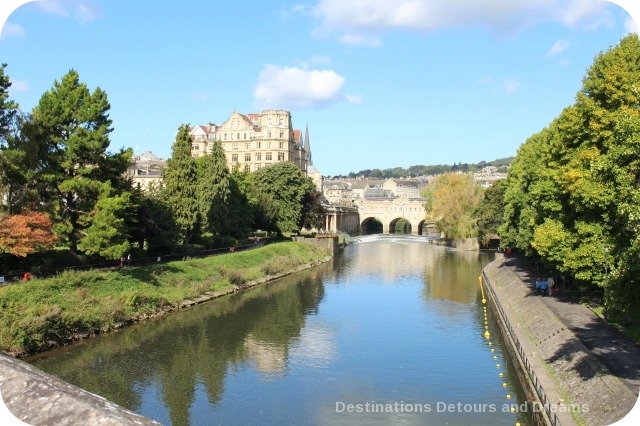
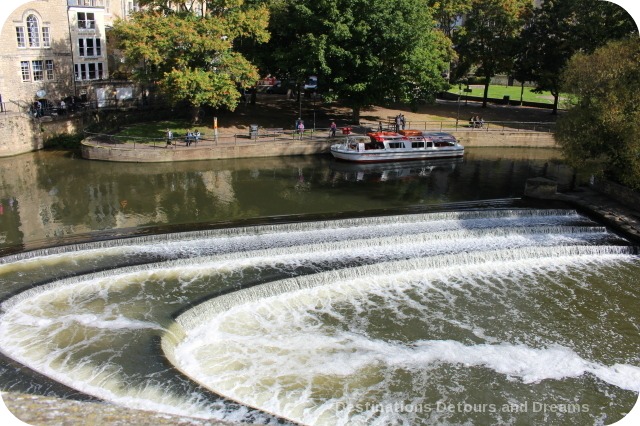
The city of Bath was established as Aquae Sulis by the Romans in the first century AD. The Romans built a temple and series of bath houses around natural thermal springs. The history of the city after the Romans withdrew from Britain is one of redevelopment and rebuilding. One of the largest development periods occurred in Georgian times, when Bath became a fashionable resort town and a popular spot for upper-crust society. The buildings from this period are what gives modern-day Bath its distinctive look. The Georgian architecture and the Roman Baths have led to the city’s UNESCO World Heritage Site designation.
The Bath of today was shaped by the vision of architect John Wood, who came to Bath in the eighteenth century. His scheme of how the city should be developed was based on the teachings of Italian architect Andrea Palladio. The warm, honey-coloured stone found on many of the buildings is Bath Stone, a fine-grained, soft limestone mined just outside Bath.
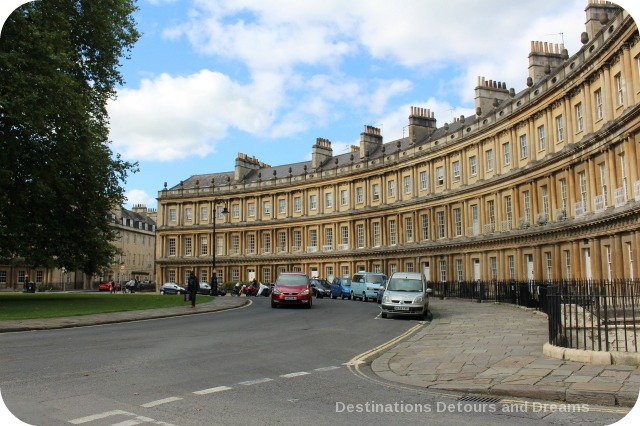
The Circus is an example of the Georgian architecture in Bath. Originally known as the King’s Circus, it was designed by John Wood the elder. It is a circular space surrounded by townhouses. The Circus, along with Queen’s Square and adjoining Gay Street form a key shape. The grassy area in the centre of the Circus was once a reservoir supplying water to surrounding houses. It became a park for residents in the 1800s. The detail on the stonework of the buildings contains many emblems, such as serpents, acorns, nautical and masonic symbols.
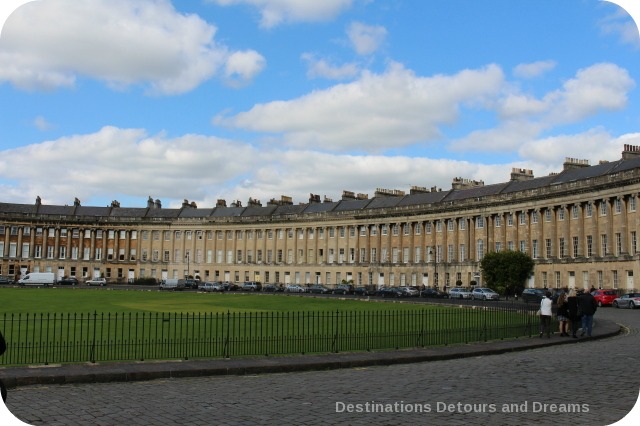
The Royal Crescent was designed by John Wood the younger, and built between 1767 and 1775. It is a row of thirty terraced houses laid out in a sweeping crescent. The Georgian facade remains much as it was when originally built. Number 1 is an historic house museum providing a picture of Georgian life. The Royal Crescent Hotel occupies numbers 15 and 16.
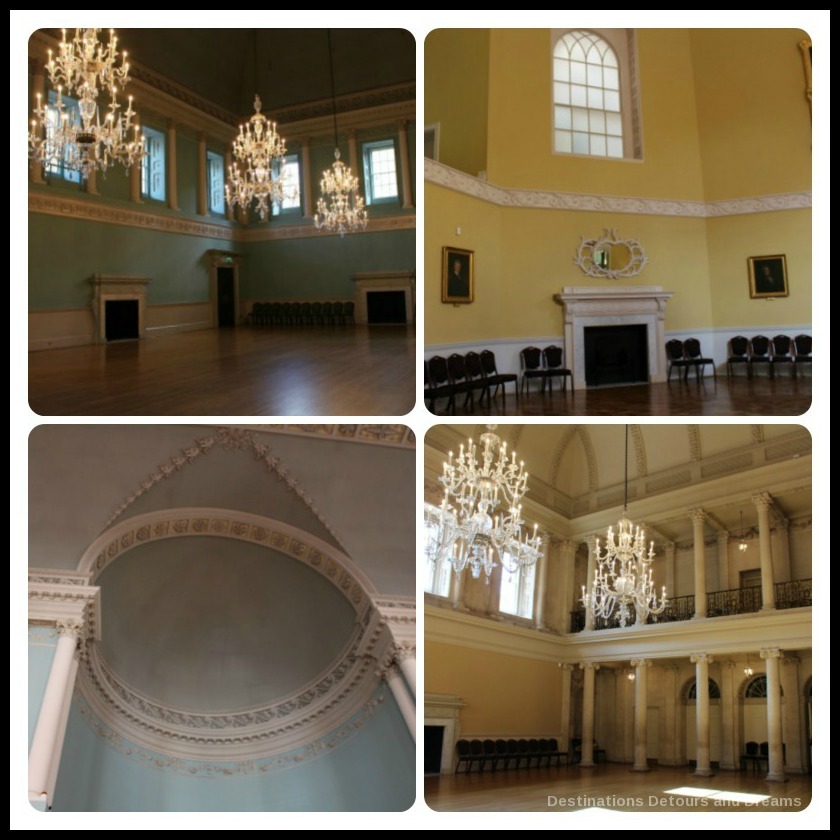
The Assembly Rooms are an entertainment venue built in 1771 by Richard “Beau” Nash, another leading architect of the Georgian redevelopment. They were at the heart of Georgian society. Each of the four rooms, the Great Octagon, Tea Room, Ball Room, and Card Room, had a specific purpose. Jane Austen lived in Bath from 1801 to 1806 and two of her novels, Persuasion and Northanger Abbey. are partially set in the city. The Assembly Rooms feature in a scene in Persuasion. Today, there is a renowed Fashion Museum on the first floor. There is an entrance fee for the museum, but you can wander through the assembly rooms for free and imagine yourself living the refined life of the eighteenth century elite.
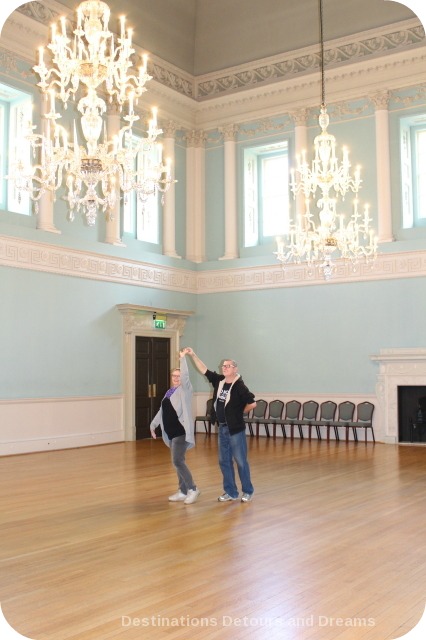
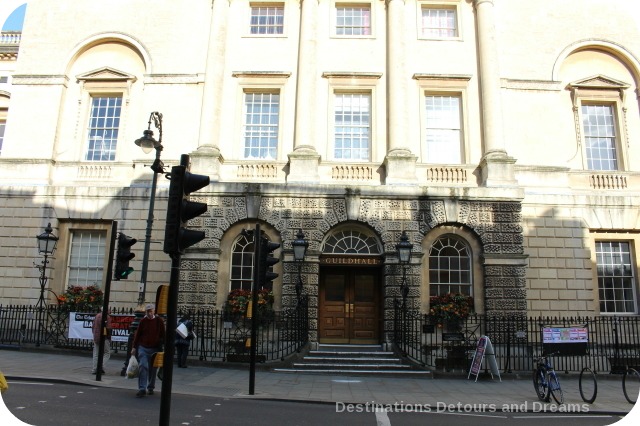
now houses city offices and banquet facilities
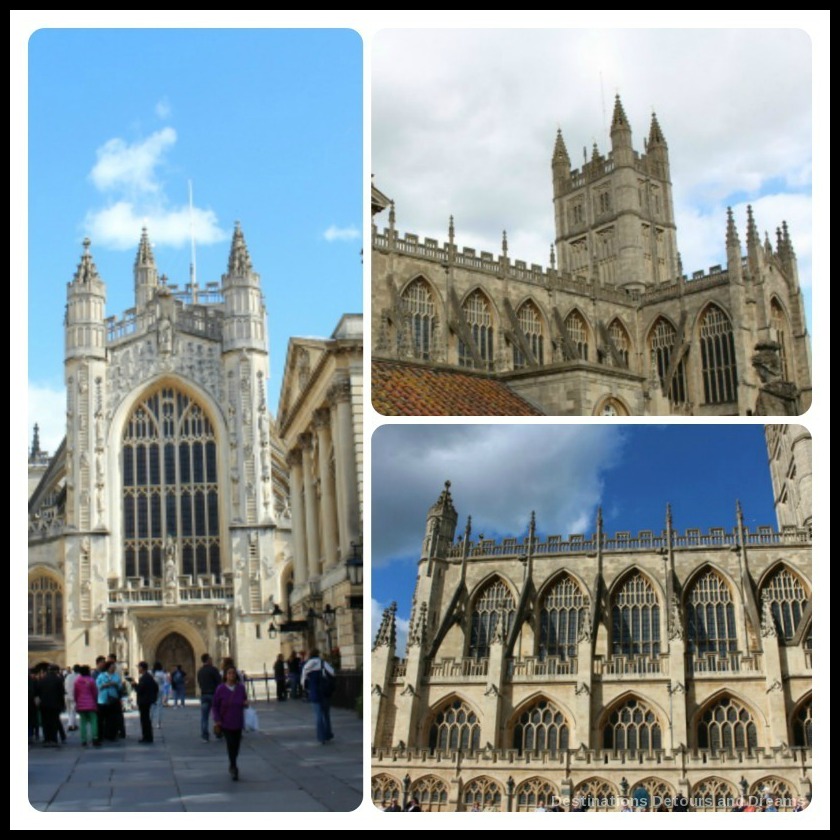
Building of Bath Abbey began in 1499. It is the last of the great medieval churches of England. It is the third church to be built on this site. An Anglo-Saxon Abbey Church was built in AD 757. Work on a large Norman cathedral began in the late eleventh century.
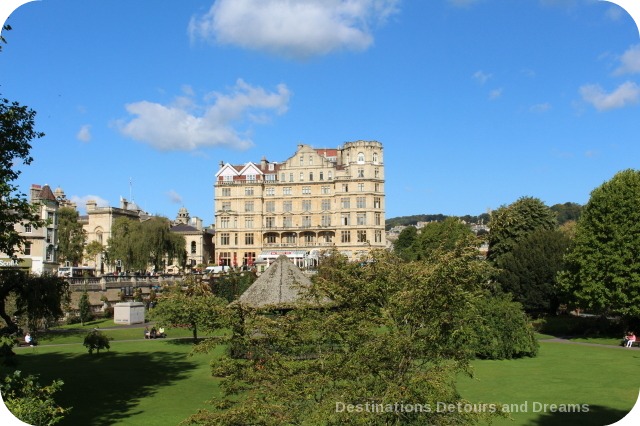
Architecture on roof reflects three classes of people:
castle for the upper, house for the middle, cottage for the lower
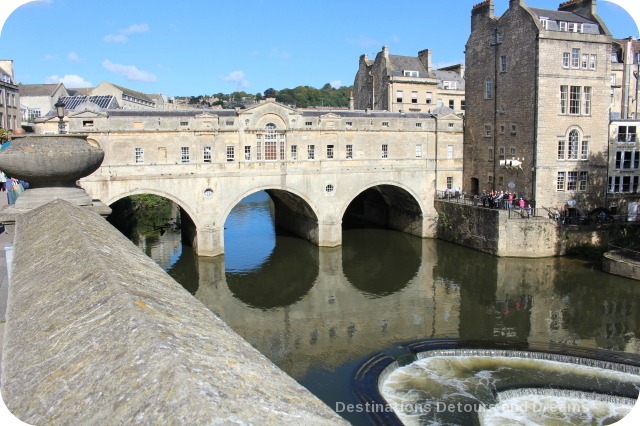
is one of a handful of historic bridges in the world with shops built into it
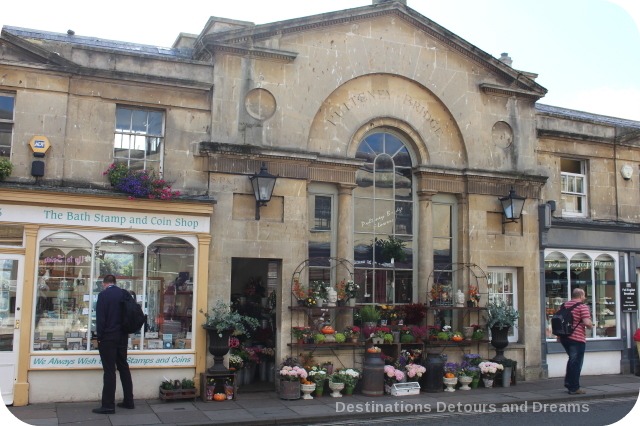
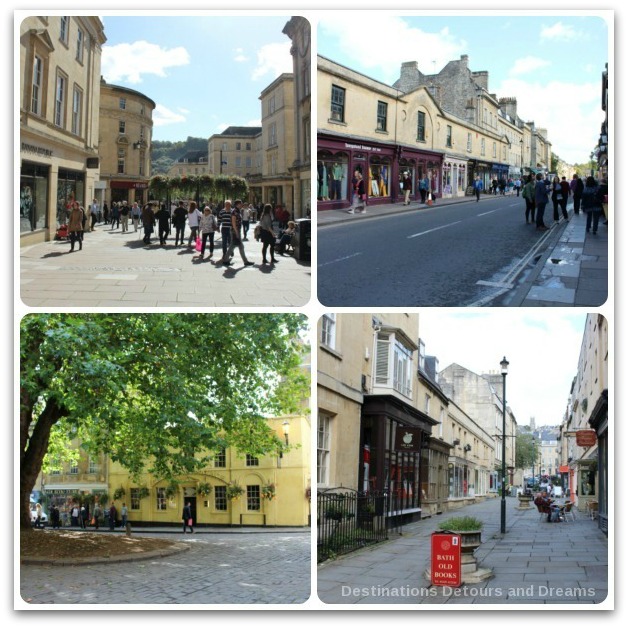
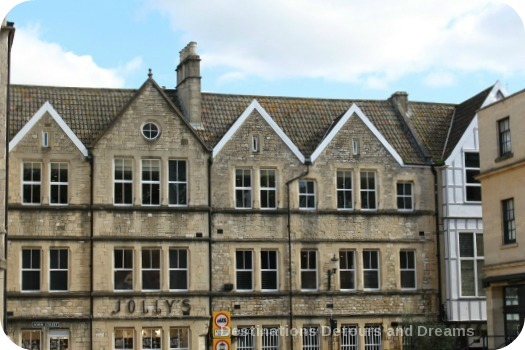
is renowned for its brands and exclusive collections
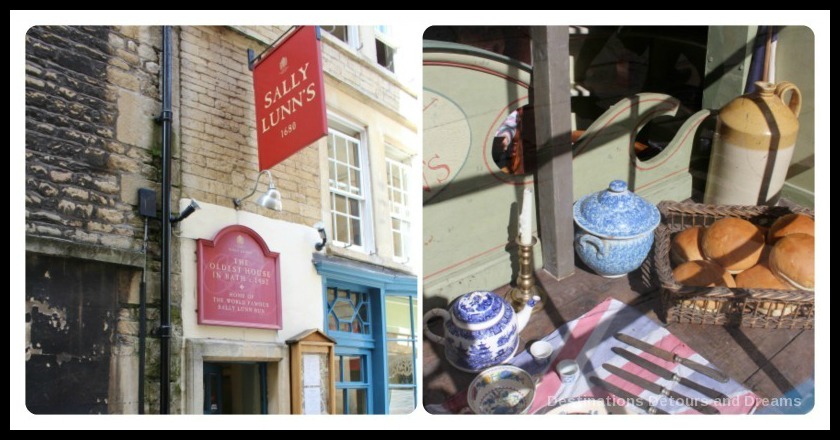
Sally Lunn, a Huguenot refugee who found work with a Bath baker
and created the Sally Lunn bun, lived here in 1680.
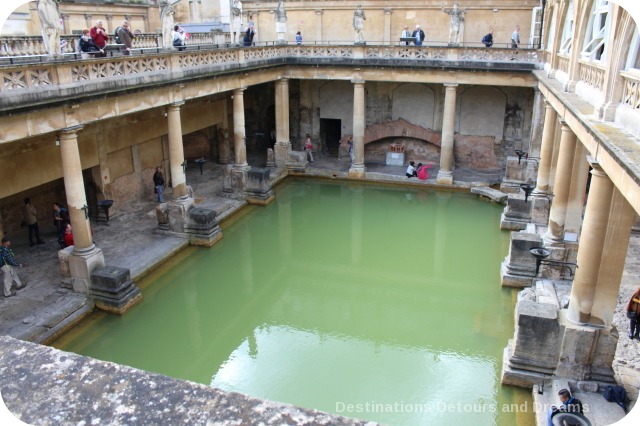
I truly enjoyed my day in Bath, but one can easily spend several days here or return again and again. In one day I did not have time to take in all the Bath has to offer, from canal rides to arts performances to its many museums. In addition to the those already mentioned, No 1 Royal Crescent , the Fashion Museum, and the Roman Baths, others include the Jane Austin Centre offering a snapshot of life in Regency times, the Holburne Museum art gallery, and the Museum of Bath Architecture. Or you can spend hours walking the streets and visiting the many shops, stopping at coffeehouses, pubs, and restaurants along the way.
Note that Bath is a popular destination and can be very busy on weekends and finding parking may be a challenge. The Bath visitor site has a list of car parks. We used the Bath Cricket Club car park.
Destinations Detours and Dreams monthly e-newsletter contains behind the scenes information, sneak peeks ahead, travel story recaps and more. SIGN UP HERE
PIN IT
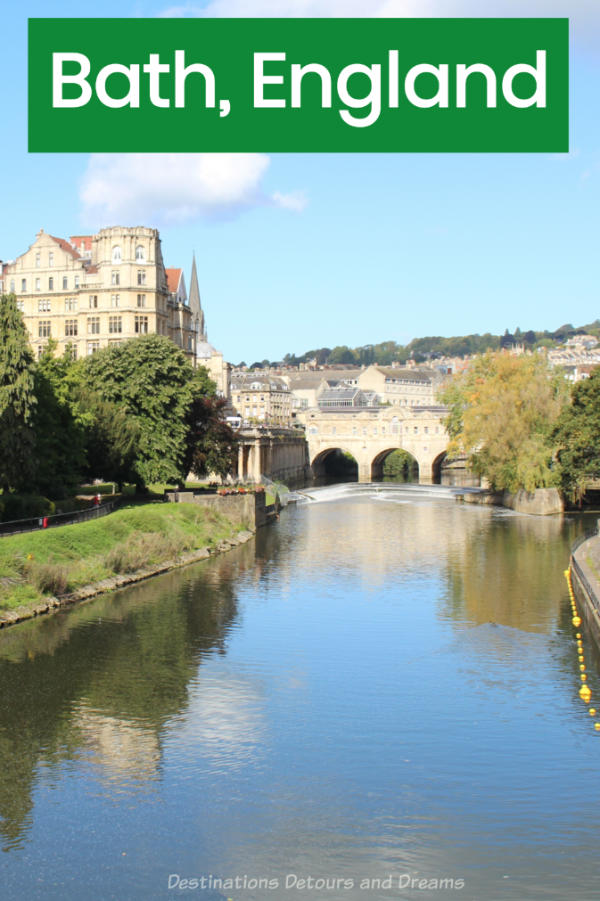

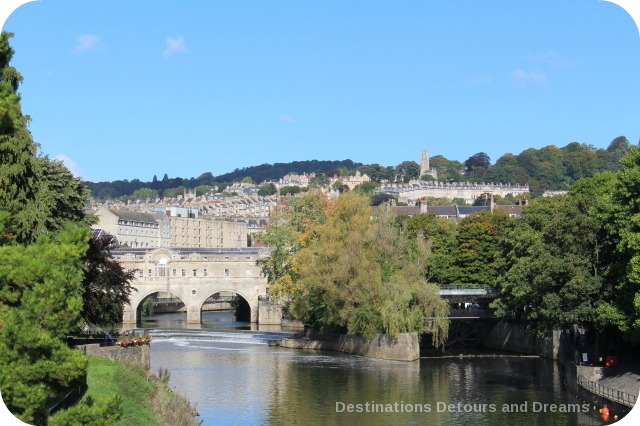
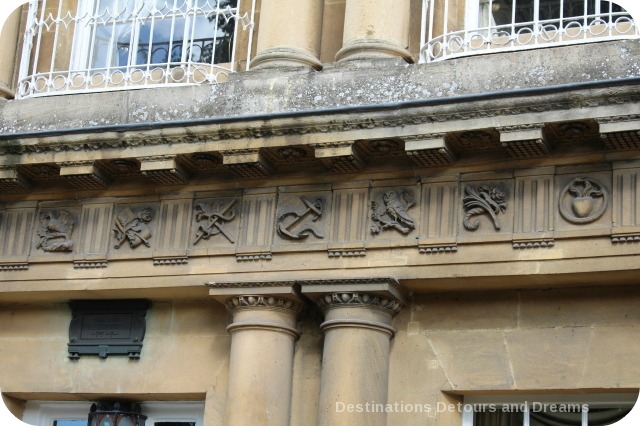
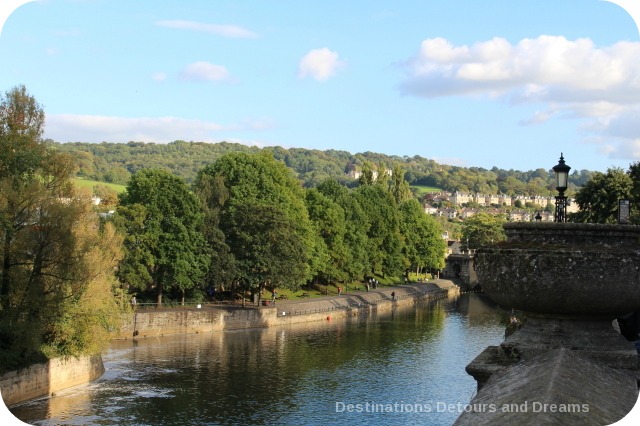
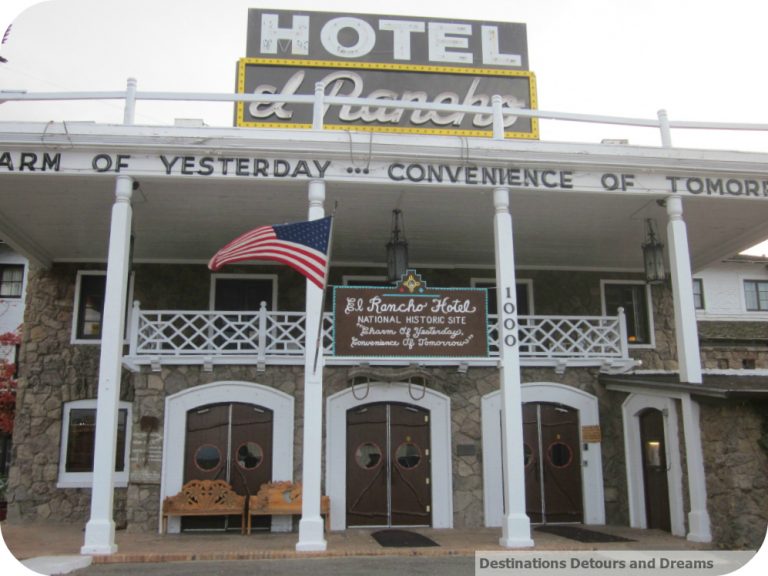
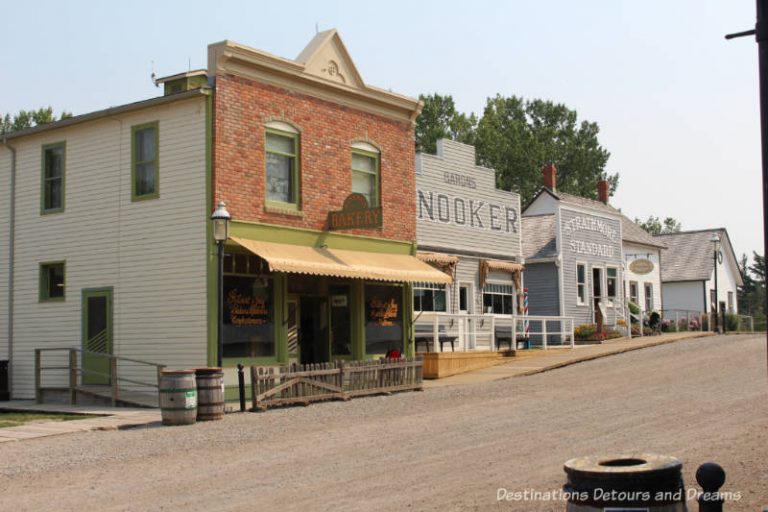
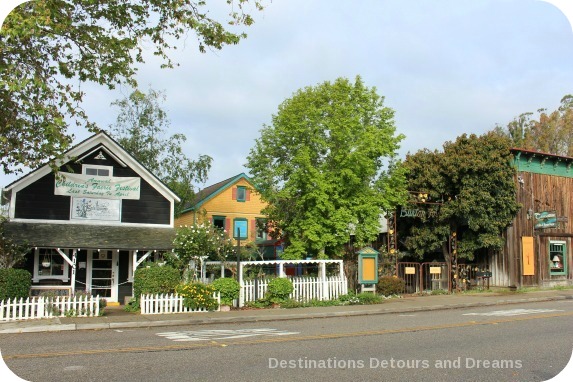
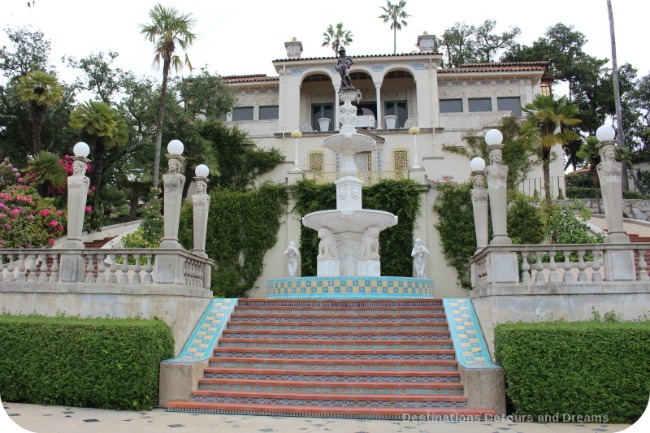
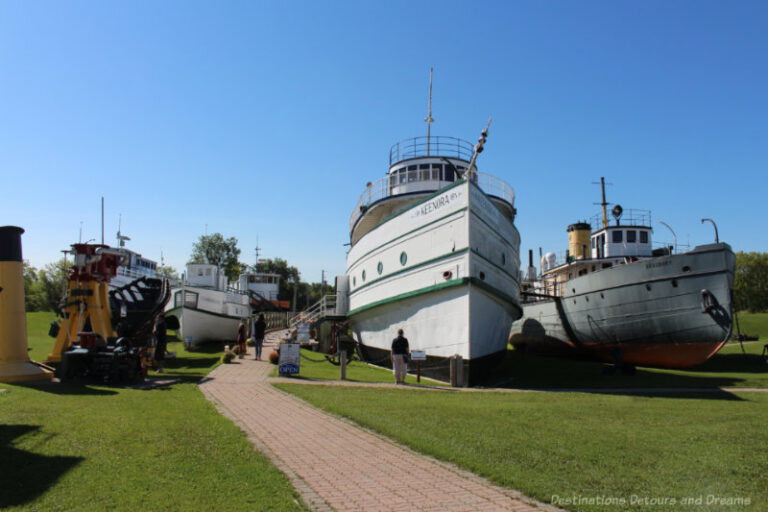
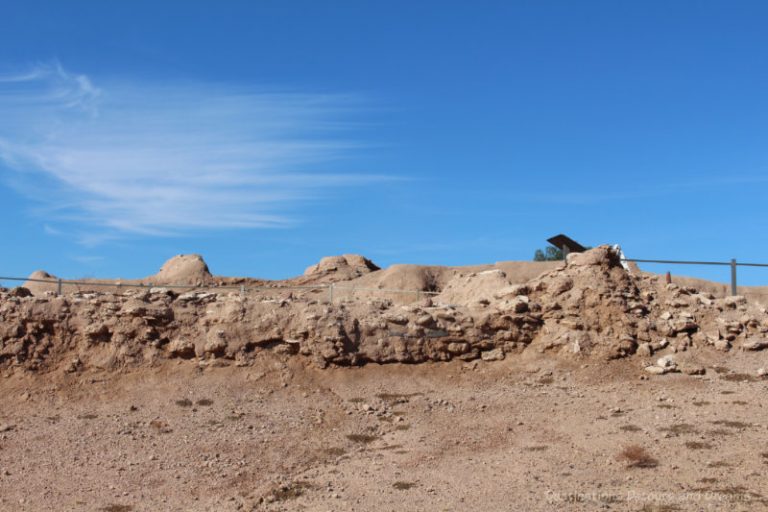
These photographs are fabulous and brought back many fond memories of my day in Bath. In addition, I was lucky to ride the Orient Express there from London. The whole day was on my my best travel experiences ever.
Glad I could bring back a few good memories Jacquie. I’m envious about the Orient Express portion of your trip..
What a beautiful city! Certainly looks like it was well worth the visit, even if only for a day.
Eva, it is a city that would be great to visit over and over again. Lots of shops, places to eat and relax, …
We also had a day in Bath in June 2014. Once again, you were able to take in more of the city and the details than we did! Thanks for completing the picture of Bath for us.
Carol, Bath has a lot to offer. I know there is a lot more I could take in on another visit.
Never been to Bath but I’m intrigued by your pictures! Love the Georgian architecture and the picture of you dancing:-) Perfect!
Thanks Irene.
I love this and I can’t believe I have yet to visit this magnificent city – excellent tour and photos Donna
Thanks Noel.
Bath truly is a magnificent city – I’m lucky enough to have friends there who I can visit and take in the sights – The last time there we went to the American Museum, which may be a strange thing for a Canadian to visit LOL But it had some wonderful quilt examples and folk art in its collection 🙂
Linda, we drove past the American Museum but did not have time to visit on this trip. I am intrigued by the idea of an American Museum in Britain and would likely visit on another trip.
Bath looks like a beautiful city and it sounds like a place where you could easily find plenty to do in a visit over several days, The architecture is fascinating with the Roman Baths and Georgian buildings with all their elegant details. My favorite photo however was the photo of The Empire Hotel with its distinctive roofline of castle, house and cottage. So unique! Anita
Anita, Bath is a great city to explore. The Empire Hotel is an interesting building with its different roof lines.
We have not been to Bath, but what a gorgeous city! We most certainly will be putting it on our ever growing list of places we want to visit.
Veronica, I’m sure you will enjoy a visit to Bath. Funny, isn’t it, how the more we travel, the longer the list of places to get to becomes.
Bath is one of my favourite cities, and one that I didn’t visit enough when we lived in the West Country down in Devon. There is so much to do, so much history and such a wonderful atmosphere that it’s hard not to be completely smitten by this gorgeous place. My tip is to go on a quiet day out of school holidays in early summer when all the hanging baskets are out. Loved your post and it brought back gorgeous memories for me. Thank you!
Thanks Johanna. I can see how one would want to visit Bath over and over again.
You have moved Bath higher on my ‘really must see this place’ list, Donna. Your photos of Bath were great and narrative filled with good information! Happy Thanksgiving~
Thanks. Bath is a beautiful city. I hope you had a happy Thanksgiving too.
I’ve visited Bath but, like you, only for one day. It would be great to go back and explore it at leisure for a whole week. Then I’d have time to enjoy a spa as well, just like the Romans did!
Rachel, I’d like to go back and explore further.A leisurely spa visit sounds wonderful.
I first visited Bath when I was studying Jane Austen so for me it is always bound up with her works. You’ve reminded me that a return visit is overdue.
Karen, there is lots to explore in Bath and the areas around it for Jane Austen fans and students. I expect you could point me to some spots I didn’t know about.
Bath looks like a great place to visit! You obviously saw quite a bit in your short visit. I enjoyed the canals and bridges, stunning! Thank you for sharing some great photographs and ideas of places not to miss.
Thanks Lisa. Bath is a great city to visit.